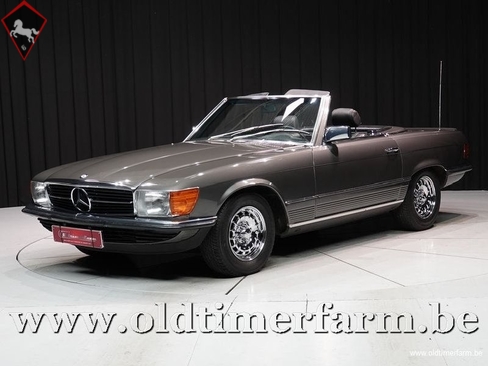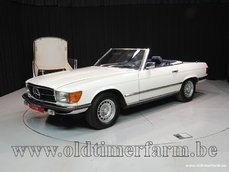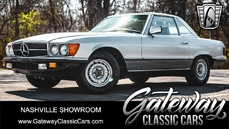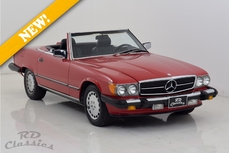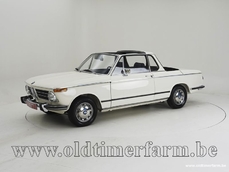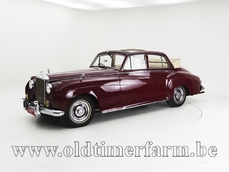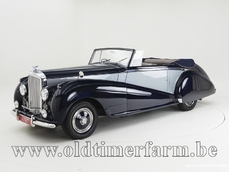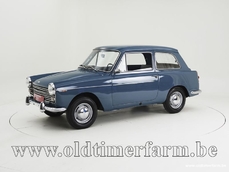Mercedes-Benz 500SL w107 SL R107 '84 1984
General description :
Lowered price from €37.950 - €35.000 The Mercedes-Benz R107 and C107 automobiles were produced from 1971 through 1989, being the second longest single series ever produced by the Mercedes-benz automaker, after the G-Class. They were sold under the SL (R107) and SLC (C107) model names. The R107 replaced the W113 SL-Class in 1972 and was replaced by the R129 SL-Class in 1989. The SLC replaced the W111 Coupé in 1971 and was replaced by the C126 S-class coupe in 1981. The R107 took the chassis components of the mid size Mercedes-Benz W114 model and mated them to the larger engines from the S-Class (W116). The SL variant was a 2-seat convertible/roadster with standard soft top and hardtop and optional folding seats for the rear bench. The SLC (C107) derivative was a 2 door hardtop coupe with normal rear seats. The SLC is commonly referred to as an 'SL coupe', but in reality it was an S-class coupe, replacing the former saloon-based 280/300 SE coupé in Mercedes lineup. The SLC was replaced earlier than the SL, in 1981, with a much larger model, the 380 SEC based on the new S class. Volume production of the first R107 car, the 350 SL, started in April, 1971 alongside the last of the W113 cars; the 350 SLC followed in October. Sales in North America began in 1972, and cars wore the name 350 SL, but had a larger 4.5L V8 (and were renamed 450 SL/SLC for model year 1973); the big V8 became available on other markets with the official introduction of the 450 SL/SLC on non-North American markets in March, 1973. US cars sold from 1972 through 1975 used the Bosch D Jetronic fuel injection system, an early electronic engine management system. From July, 1974 both SL and SLC could also be ordered with a fuel-injected 2.8L straight-6 as 280 SL and SLC. US models sold from 1976 through 1979 used the Bosch K Jetronic system, an entirely mechanical fuel injection system. All US models used the 4.5 liter engine, and were called 450 SL/SLC. In September, 1977 the 450 SLC 5.0 joined the line. This was a special version of the big coupé featuring a new all-aluminum five-liter V8, aluminum alloy doors, hood and trunk lid - and a black rubber rear spoiler. Starting in 1980, US cars were equipped with lambda control, which varied the air/fuel mixture based on feedback from an oxygen sensor. The 350, 450 and 450 SLC 5.0 models (like the 350 and 450 SL) were discontinued in 1980 with the introduction of the 380 and 500 SLC in March, 1980. At the same time, the cars received a very mild makeover; the 3-speed automatic was replaced by a four-speed unit, the 280 models came with a standard 5-speed (formerly a 4-speed) manual and all five-liter cars gained a black rear spoiler lip. The 280, 380 and 500 SLC were discontinued in 1981 with the introduction of the 126 series 380 and 500 SEC coupes. A total of 62,888 SLCs had been manufactured over a ten year period of which just 1,636 were the 450 SLC-5.0 and 1,133 were the 500 SLC. Both these models are sought by collectors today. With the exception of the SL65 AMG Black Series, the SLC remains the only fixed roof Mercedes-Benz coupe based on a roadster rather than a sedan. Following the discontinuation of the SLC in September, 1981, the 107 series continued initially as the 280, 380 and 500 SL. At this time, the V8 engines were re-tuned for greater efficiency, lost a few hp and consumed less fuel, helped by substantially numerically shorter axle ratios (that went from 3.27:1 to 2.47:1 for the 380 SL and from 2.72:1 to 2.27:1 for the 500 SL). From September, 1985 the 280 SL was replaced by a new 300 SL, and the 380 SL by a 420 SL; the 500 SL continued and a 560 SL was introduced for certain extra-European markets, most notably the USA. Also in 1985, the Bosch KE Jetronic was fitted. The KE Jetronic system varied from the earlier, all mechanical system by the introduction of a more modern engine management "computer", which controlled idle speed, fuel rate, and air/fuel mixture. The final car of the 18 years running 107 series - 500 SL painted Astral Silver was built on August 4, 1989 and it currently resides in the Mercedes-Benz museum in Stuttgart, Germany. Specifications Bodywork Length: cm (in): 439 (172.8) Width: cm (in): 179 (70.5) Height: cm (in): 130 (51.2) Wheelbase: cm (in): 246 (96.9) Weight: kg (lb): 1545 (3406) Mechanics. Displacement: V8 4973 cc (304 cu in) front-mounted Valve gear: 16 Fuel system: D-Jetronic indirect injection Gearbox: 4-speed automatic Driven wheels: rear-wheel drive Maximum power: 228 hp at 4750 rpm Maximum torque: 405 Nm at 3000 rpm Maximum speed: 221 km/h (137 mph)
http://www.oldtimerfarm.be/en/collection-cars-for-sale/5163/mercedes-benz-500-sl-r107-84.php
1984 Mercedes-Benz 500SL w107 SL R107 '84 is listed sold on ClassicDigest in Aalter by Oldtimerfarm Dealer for €35000.
Car Facts
Car type : Car Make : Mercedes-Benz Model : 500SL w107 Model Version : SL R107 '84 Engine size : 0.0 Model Year : 1984 Location : Aalter
Sold
Seller Information
Sold
People who viewed this Mercedes-Benz 500SL w107 also viewed similar Mercedes-Benz listed at ClassicDigest
Other cars listed for sale by this dealer
About Mercedes-Benz
In the annals of automotive history, the journey of Mercedes-Benz is a tale that unfolds with the ingenuity of its founding pioneers. In the year 1886, Karl Benz crafted the Benz Patent Motorwagen, a creation that would go down in history as the world's inaugural automobile. Unbeknownst to him, this moment marked the genesis of what would evolve into the most illustrious premium car manufacturer globally. The financial underpinning of this pioneering venture, interestingly, was provided by Karl Benz's wife, Bertha Benz, demonstrating a remarkable partnership that would set the tone for Mercedes-Benz's legacy.A parallel narrative emerged not far away, as Daimler-Motoren-Gesellschaft, founded by Gottlieb Daimler and Wilhelm Maybach, entered the scene. In 1901, they unveiled their automobile under the now-famous moniker "Mercedes," meaning "godsend" in Spanish. This name was bestowed upon the car at the behest of Emil Jellinek's daughter, the distributor for Daimler-Motoren-Gesellschaft. The wheels of innovation were set in motion.
Fast forward to 1926, a pivotal year that witnessed the merger of Daimler with Benz & Cie., culminating in the birth of Daimler-Benz. The amalgamation saw the adoption of "Mercedes-Benz" as the distinguished trademark for their automobiles, fusing the legacies of two visionary entities into one.
Contrary to perceptions of conservatism, the trajectory of Daimler-Benz unfolds as a chronicle of industry firsts. From the introduction of the honeycomb radiator to the float carburetor, and the pioneering implementation of four-wheel brakes in 1924, Daimler-Benz consistently pushed the boundaries of automotive innovation. The diesel-powered Mercedes-Benz 260 D in 1936 marked the inception of diesel engines in passenger cars. The iconic Mercedes-Benz 300SL Gullwing made history as the first car with direct fuel injection, albeit the Gutbrod's tiny 2-stroke engine can claim precedence.
Safety innovations became a hallmark, with Béla Barényi's patented safety cell design in the "Ponton"-models in 1951, featuring front and rear crumple zones. The W116 450SEL 6.9 saw the introduction of the Anti-Lock Brake system (ABS), another pioneering safety feature. From the first production airbags and beyond, the legacy of "firsts" continued to be etched into the fabric of Daimler-Benz.
Over its centennial journey, Mercedes-Benz has not merely produced cars but has sculpted automotive icons. The SSKL, 710 SSK Trossi Roadster, 770K Grosser, 540K Spezial Roadster, 300SL Gullwing, w100 600 Pullman, w111 280SE 3.5 Flachkühler, w113 230SL Pagoda, w109 300 SEL 6.3, and w201 2.3-16 Cosworth stand testament to the brand's commitment to engineering excellence.
The roaring Silver Arrows, or "Silberpfeile," including the W 25, W 125, W154, W165, and W196, created a legacy of dominance on the racetrack. These machines were not merely cars; they were expressions of precision, speed, and an indomitable spirit that left their competitors in the dust.
As Mercedes-Benz marches into the future, it does so not just as an automaker but as a custodian of a legacy, a torchbearer of innovation, and a beacon of automotive excellence. The road ahead is sure to witness the continued fusion of cutting-edge technology, timeless design, and an unwavering commitment to setting new standards in the world of automobiles.
One luminary figure who left an indelible mark was Béla Barényi, often heralded as the "father of passive safety" for his pioneering work in safety engineering. His patented safety cell design, featuring front and rear crumple zones, became a hallmark of Mercedes-Benz's commitment to occupant safety, setting new standards that reverberated throughout the automotive world.
Moving through the chronicles, the collaborative genius of Wilhelm Maybach, alongside Gottlieb Daimler, laid the foundation for Daimler-Motoren-Gesellschaft. Their innovations not only birthed the first Mercedes but established a culture of relentless pursuit of technological excellence that remains integral to Mercedes-Benz's DNA.
In the post-merger era of 1926, Ferdinand Porsche emerged as a prominent figure within Mercedes-Benz. His work on the Mercedes-Benz S-Type, a supercharged race car, garnered acclaim and set the stage for a legacy that extended far beyond the marque. Porsche's impact would later extend to his eponymous company, but his influence at Mercedes-Benz during those formative years was pivotal.
As the 20th century progressed, the legendary Rudolf Uhlenhaut emerged as a key figure. Uhlenhaut, an accomplished engineer and the driving force behind the iconic Silver Arrows, played a crucial role in Mercedes-Benz's dominance in motorsports. His engineering prowess and attention to detail were instrumental in creating some of the most formidable racing cars of the era.
In the latter half of the century, figures like Bruno Sacco, the head of design at Mercedes-Benz from 1975 to 1999, left an indelible imprint on the brand's aesthetic identity. Sacco's design philosophy, characterized by clean lines and timeless elegance, shaped iconic models like the W126 S-Class and the W201 190E, solidifying Mercedes-Benz's reputation for luxury and sophistication.
The narrative would be incomplete without acknowledging the contributions of engineers like Hans Scherenberg, whose leadership in the 1970s ushered in a new era of technological innovation at Mercedes-Benz. Scherenberg's tenure saw the development of groundbreaking technologies, including the Anti-Lock Brake system (ABS) and the introduction of airbags in production cars.
